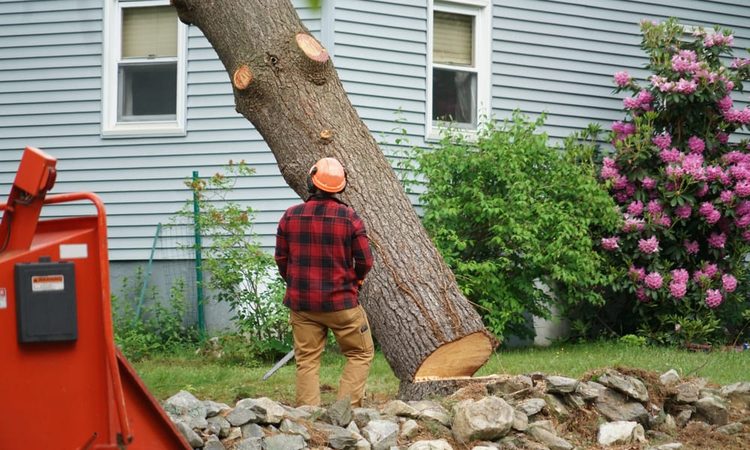What You Should Know About Stump Removal Process
After cutting down a tree, many property owners face the challenge of dealing with the remaining stump. Tree stumps can become obstacles for landscaping, mowing, and future construction projects. Understanding the stump removal process helps homeowners make informed decisions about this important yard maintenance task. From grinding methods to complete extraction, various approaches exist to eliminate these unwanted remnants effectively.

Tree stumps left behind after cutting down trees present more than just aesthetic concerns. They can attract pests, interfere with landscaping plans, and pose tripping hazards. The stump removal process involves several considerations, from choosing the right method to understanding associated costs and preparing your property adequately. This guide walks you through everything you need to know before tackling stump removal.
Understanding the Stump Removal Process
Stump removal is the complete extraction of a tree stump and its root system from the ground. Unlike stump grinding, which grinds the visible portion below ground level, full removal eliminates the entire structure. The process begins with assessing the stump’s size, age, and root spread. Older stumps with decayed roots are generally easier to remove than fresh ones with firm root systems. The surrounding soil condition and proximity to structures also influence the approach. Professional arborists typically inspect the site first, checking for underground utilities, irrigation systems, and other obstacles that could complicate removal. The actual extraction may involve digging around the stump, cutting major roots, and using mechanical equipment to pull or lift the stump from the ground. This method leaves a hole that requires filling and often disturbs more of the surrounding area compared to grinding.
How to Get Rid of Stump: Available Methods
Several methods exist for stump removal, each with distinct advantages. Mechanical removal uses excavators or stump grinders to physically extract or grind the stump. Stump grinding is the most common professional method, using a rotating cutting disk to chip away wood below the soil surface, typically 6 to 12 inches deep. Chemical removal involves applying potassium nitrate or other compounds to accelerate decomposition, though this process takes several weeks to months. Manual removal works for smaller stumps and involves digging around the base, cutting roots with an axe or saw, and leveraging the stump out with a pry bar. Burning is another option where permitted, requiring drilling holes in the stump, adding fuel, and carefully monitoring the controlled burn. Natural decay is the slowest method, allowing nature to break down the stump over several years. Each method suits different situations based on stump size, location, timeline, and budget considerations.
Stump Removal Cost Considerations
The cost of stump removal varies significantly based on multiple factors. Stump diameter is the primary cost driver, with most services charging per inch of diameter. A small stump under 12 inches might cost between $60 and $150, while larger stumps exceeding 24 inches can range from $200 to $400 or more. Accessibility affects pricing, as stumps in hard-to-reach areas require more labor and specialized equipment. Root system complexity, soil conditions, and the number of stumps being removed also influence total costs. Some providers charge a flat rate per stump, while others use diameter-based pricing. Additional expenses may include debris removal, dirt filling, and travel fees for remote locations.
| Service Provider | Method Offered | Cost Estimation |
|---|---|---|
| Local Tree Service Companies | Stump Grinding | $100-$300 per stump (average diameter) |
| National Chains (TruGreen, Davey Tree) | Full Removal & Grinding | $150-$500 depending on size |
| Independent Arborists | Manual/Mechanical Removal | $200-$600 for complete extraction |
| Equipment Rental (Home Depot, Sunbelt) | DIY Stump Grinder Rental | $100-$200 per day rental |
| Chemical Treatment (DIY) | Chemical Decomposition | $10-$30 for products (plus waiting time) |
Prices, rates, or cost estimates mentioned in this article are based on the latest available information but may change over time. Independent research is advised before making financial decisions.
Professional Stump Removal Service Benefits
Hiring professional stump removal services offers numerous advantages over DIY approaches. Professionals possess specialized equipment that efficiently handles stumps of any size, completing jobs in hours rather than days. They carry liability insurance protecting property owners from damage claims during removal operations. Experienced technicians understand how to navigate around utilities, irrigation systems, and landscape features without causing collateral damage. Professional services include debris cleanup and often provide options for wood chip mulch or soil filling. Safety is another significant benefit, as stump removal involves heavy machinery and physical hazards that untrained individuals may underestimate. Professionals can also assess whether grinding or full removal better suits your specific situation and future landscaping plans. Many services offer guarantees on their work and can address complications like extensive root systems or stumps near foundations that require extra care.
Preparing for Stump Removal
Proper preparation ensures smooth stump removal and prevents unexpected complications. Start by marking the stump location and clearing a work area extending at least 10 feet in all directions. Remove rocks, debris, and lawn decorations that could interfere with equipment. Contact your local utility company to mark underground lines, including electric, gas, water, and telecommunications cables. This step is crucial and often required by law. Inform neighbors about the scheduled work, especially if noise or temporary access through adjacent properties is necessary. Discuss with your service provider whether you want wood chips left for mulch or completely removed. Identify any irrigation systems, septic lines, or drainage pipes near the stump. If attempting DIY removal, gather necessary tools beforehand, including shovels, mattocks, pruning saws, safety gear, and appropriate disposal arrangements. Check local regulations regarding stump burning if considering that method. Taking photographs before work begins documents the initial condition and helps with any insurance or warranty claims if issues arise.




